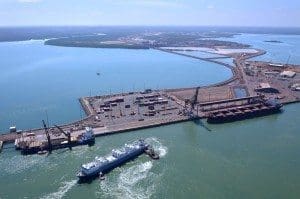LIVESTOCK producers who rely on live export markets also rely heavily on the actions and investment decisions of a small handful of live exporting companies to get welfare outcomes right.
As the Awassi Express disaster in April showed, with every new welfare crisis a trade that has repeatedly promised to do better pushes closer to losing the public and political support it needs to remain operating.
It is well documented that all Australian livestock exporters must comply with a range of stringent regulations around stock preparation, shipping standards and in-market supply chains; rules designed to ensure Australian animals are treated safely and humanely in transit and upon arrival in export markets.
But, above and beyond these minimum requirements, there are additional steps and investments exporters can take to further reduce the risk of poor welfare outcomes.
Paying for more on-board stockmen, higher quality feed, better bedding, investing in purpose-designed vessels with better ventilation, reducing stocking densities, restricting sales to abattoirs that use stunning, increasing control and traceability to prevent out of supply chain sales, and inoculating cattle against BRD are some examples.
Herein lies an issue that is rarely discussed but which contributes to a market environment in which exporters who invest more heavily in welfare can be commercially disadvantaged.
Investing in higher standards comes at a higher cost, tying up money that exporters operating at the minimum end of the scale don’t incur, and which can help the latter to outbid the former when it comes to securing available stock.
The live export industry has been roundly criticised for letting producers down by allowing ongoing animal welfare issues to occur, and, as those directly responsible for the stock, it is indeed the exporters’ responsibility to get it right.
But should there be some introspection from producers themselves about whether they too play a role in these outcomes?
Producers universally expressed shock and anger at the conditions revealed on the Awassi Express. Producer representatives strongly emphasised the point that farmers place great importance on the welfare of their stock on-farm and expect them to be treated well wherever they go, whether it be to an abattoir in Australia or a live export market overseas.
But how many producers make a priority of checking or assessing an exporters’ animal welfare standards, supply chain investments or ESCAS compliance record before agreeing to sell them their valued stock?
How many simply take the best price they can get on the day, regardless?
Anecdotal feedback from conversations with a number of export buyers in recent weeks would suggest most producers typically chase price first and foremost.
‘most want the highest price and nothing more.’
One buyer, who asked not to be identified, explained it like this: “For most vendors the order of priority when selling cattle is price, price and then price.
“Some producers are very active in the marketing of their cattle and animal welfare.
“They want to know where the cattle are going, which ships the cattle are traveling on and some assurances on stunning.
“But most want the highest price and nothing more.”
Another exporter told Beef Central that some larger cattle producers in Australia are now using welfare as the primary determinant of which exporter they sell to.
In a free market many producers would take exception to any suggestion they take a lower price when they face multiple cost challenges as it is. All Australian exporters are held to world leading regulatory welfare standards and it is ultimately the live exporters responsibility to get their welfare standards right, not the producers’.
The Polish poet Stanislaw Jerzy Lec once said “no snowflake in an avalanche ever feels responsible”.
Producers can’t be held responsible for bad welfare outcomes on individual shipments or in export markets but collectively they can influence improved welfare standards throughout the trade, to ensure their animals are looked after as well post-farm gate as they are on their own farms.
Good animal welfare in live export supply chains requires substantial investment.
Holding exporters to a high level of welfare accountability before selling them stock may be an investment worth making to protect future market access.

